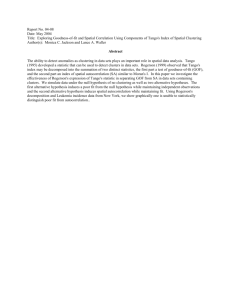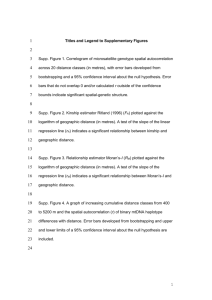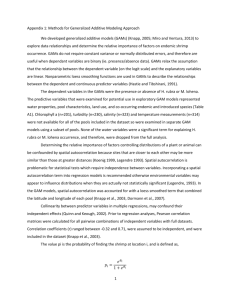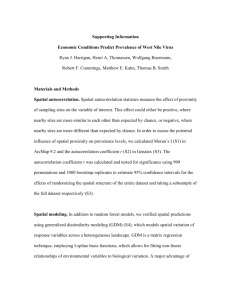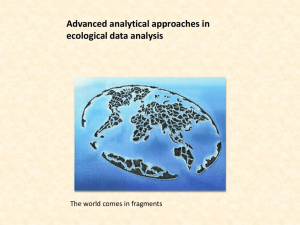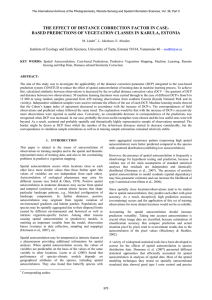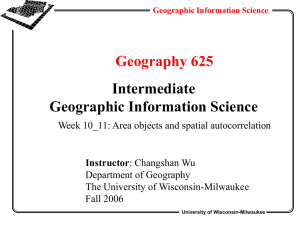SUPPLEMENTARY MATERIAL Appendix: Spatial Autocorrelation
advertisement
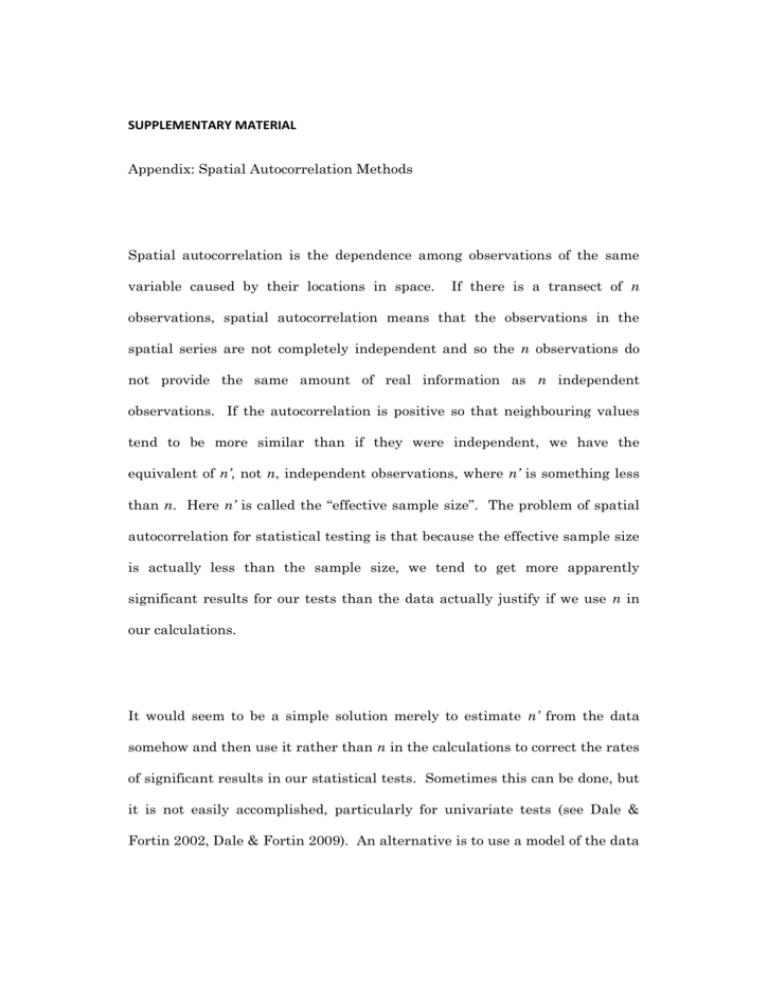
SUPPLEMENTARY MATERIAL Appendix: Spatial Autocorrelation Methods Spatial autocorrelation is the dependence among observations of the same variable caused by their locations in space. If there is a transect of n observations, spatial autocorrelation means that the observations in the spatial series are not completely independent and so the n observations do not provide the same amount of real information as n independent observations. If the autocorrelation is positive so that neighbouring values tend to be more similar than if they were independent, we have the equivalent of n’, not n, independent observations, where n’ is something less than n. Here n’ is called the “effective sample size”. The problem of spatial autocorrelation for statistical testing is that because the effective sample size is actually less than the sample size, we tend to get more apparently significant results for our tests than the data actually justify if we use n in our calculations. It would seem to be a simple solution merely to estimate n’ from the data somehow and then use it rather than n in the calculations to correct the rates of significant results in our statistical tests. Sometimes this can be done, but it is not easily accomplished, particularly for univariate tests (see Dale & Fortin 2002, Dale & Fortin 2009). An alternative is to use a model of the data that has a similar autocorrelation structure, and use Monte Carlo methods to generate a large number of similarly-structured “data” sets with which the results from the real data can be compared. This is the “Model & Monte Carlo” approach suggested by Dale & Fortin (2002). There are a number of different models of spatial autocorrelation available for use, but one of the most common is the autoregressive model, which mimics the familiar regression model but relates the variable of interest to itself rather than to other variables. For example, xi i 1 j i 20 j xj i The approach advocated is to start with a very general autoregressive model such as the one above and find the one that best fits the observations from the spatial series. The model is then used to generate a large number of series of “data”, similar to the series observed. The many generated realizations of the best fit model can be used for direct comparison of test statistics, observed vs. the distribution from Monte Carlo realizations, or to provide an estimate of the effective sample size, which can then be used for subsequent statistical tests. For example, in an ANOVA analysis, the numbers of degrees of freedom associated with each source of variation is unchanged from standard practice except for the total, which is now based on the effective sample size n’, rather than on the full number of observations, n. We have described an approach suitable for data that occur in spatial series, but we now describe a method for assessing the degree of spatial autocorrelation when the data occur in a two-dimensional grid or lattice. This is the “join count” approach which examines the categories to which first-order neighbours on a lattice belong. For simplicity, consider a small rectangular lattice, the nodes of which belong to one of two categories: black or white. The joins between “rook’s move neighbours are either black-black or white-white, joining nodes of the same class, or white-black, joining nodes of different classes. The more “like” joins and the fewer “unlike” joins there are, the greater is the autocorrelation in the structure. In this example of 9 nodes in a 3 × 3 lattice, there are 3 white-white joins, 3 black-black joins, and 6 white-black joins. References Dale MRT, Fortin M-J (2009) Spatial autocorrelation and statistical tests: some solutions. Journal of Agricultural, Biological and Environmental Statistics 14:188–206. Dale MRT, Fortin M-J (2002) Spatial autocorrelation and statistical tests in ecology. Ecoscience 9: 162–167.

